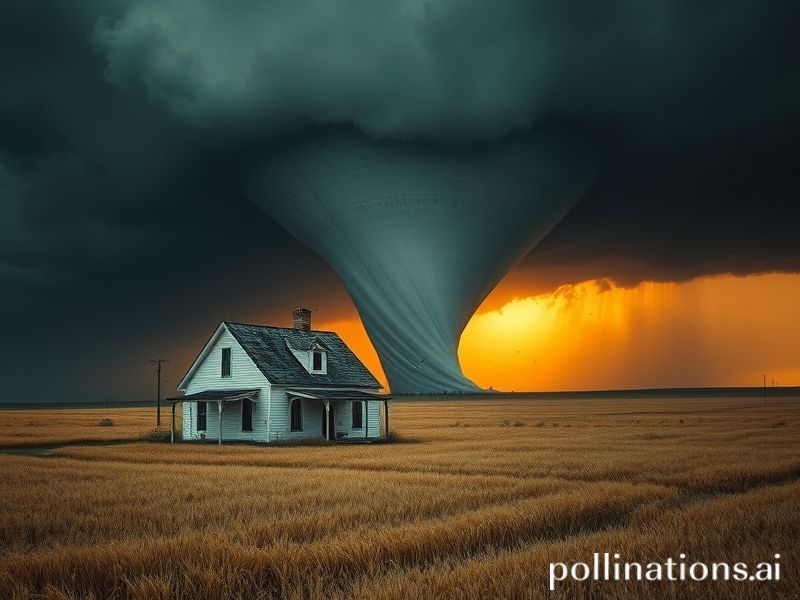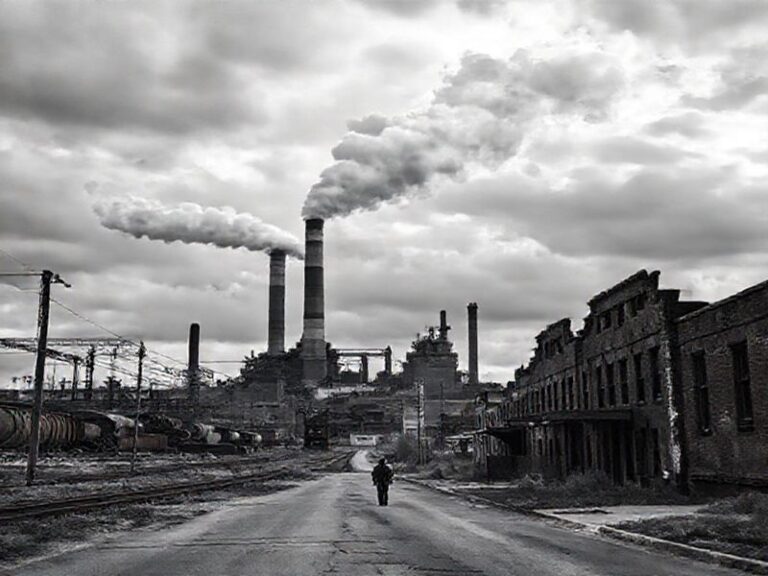Global Spin Cycle: How One Tornado Warning Briefly Unites the Planet in Manufactured Panic
A Tornado Warning in a World Already Spinning
By the time the sirens began their unmusical wail across central Oklahoma last Tuesday, half the planet was already watching via a Brazilian storm-chaser’s TikTok live stream. Somewhere in Lagos, an Uber driver glanced at the same purple hook echo on his weather app, muttered “not my problem,” and resumed arguing about Arsenal’s back four. Such is the miracle of the early Anthropocene: the funnel cloud may be fiercely local, but the dread is instantly syndicated.
Meteorologically speaking, a tornado warning is a glorified neighborhood watch notice—an urgent tap on the shoulder from the National Weather Service telling roughly 42,000 people to quit doom-scrolling and locate the nearest interior bathroom. Politically, however, it is a Rorschach test. In the United States, it cues performative bipartisan unity: governors of both parties tweet identical “thoughts and prayers” templates, while cable anchors stand in sideways rain to prove that capitalism can monetize anything, including hypothermia. Across the Atlantic, European broadcasters adopt the soothing tone zookeepers use for escaped tigers—sympathetic, but quietly thrilled at the exotic content. Meanwhile, Chinese state media runs a 90-second explainer blaming Western decadence for chaotic jet streams, illustrated with an animated eagle vomiting weather fronts.
The global significance? Supply chains, of course. That flattened truck stop in Kansas was scheduled to load frozen beef onto a Maersk container bound for Dubai’s Ramadan buffets. Thanks to a single mesocyclone, a Qatari influencer will now have to plate Wagyu sliders instead of prime T-bone, and 2.3 million Instagram followers will taste the difference. The World Food Programme keeps a color-coded spreadsheet labeled “Tornado-Adjacent Caloric Disruption,” right between “Ukraine Grain” and “Climate Guilt.”
Yet tornado warnings are also a masterclass in comparative psychology. In Japan, the same doppler alert would trigger orderly queues outside designated evacuation gyms where vending machines still stock hot canned coffee. In Australia, citizens would shrug and call the twister “a bit windy.” In Russia, the population would collectively refuse to believe it until the roof landed in a different oblast. Only Americans, bless their entrepreneurial hearts, respond by driving toward the storm in dented pickup trucks to sell “I survived Dorothy 2024” T-shirts before the debris settles.
The broader moral is less about wind speed than about bandwidth. We have engineered a planet where a haystack-sized whirlwind in a flyover state can hijack the attention of Mumbai call centers, German insurance actuaries, and Korean esports fans simultaneously. The same satellites that warn Tulsa soccer moms also serve up real-time hailstone porn to Norwegian insomniacs. Somewhere in the algorithm, empathy, voyeurism, and advertising CPMs blend into one indistinguishable smoothie.
And so the warning ends—usually within thirty minutes, often with minimal casualties, always with maximal content. The all-clear is sounded; the live streams sign off with cheery “like and subscribe”; the planet’s gaze swivels to fresher catastrophes. The tornado rots forgotten in some archival server, next to last month’s Turkish earthquake and yesterday’s celebrity divorce. Humanity, ever the efficient curator of its own anxieties, files it under “local news” and gets back to pretending the sky is not, in fact, trying to reorganize the furniture.
Until next Tuesday, when the sirens spin up again and the entire circus hits rewind. The Earth keeps turning, the jet stream keeps meandering, and we keep refreshing our phones to see whose trailer park the atmosphere has selected for this week’s season finale. Curtain falls. Roll credits. Don’t forget to tip your meteorologist.







